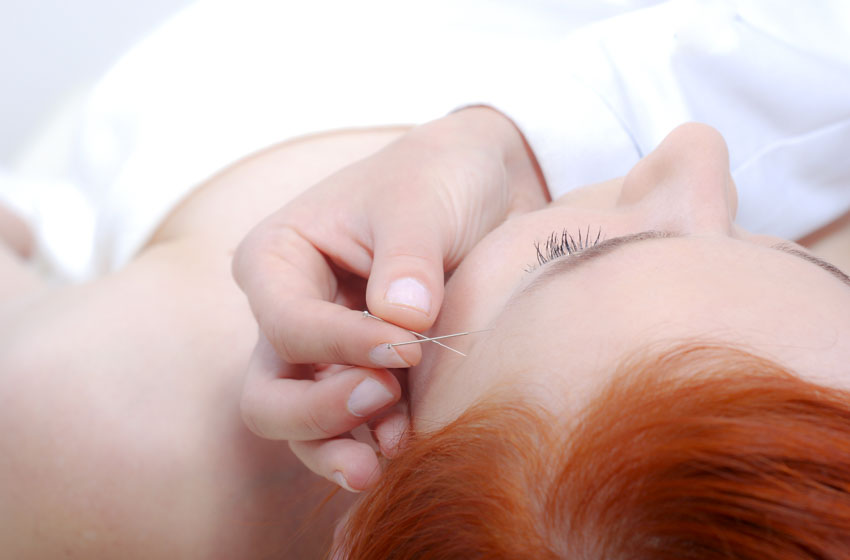
Researchers conclude that acupuncture increases positive outcomes for cataract surgery patients that have comorbid glaucoma. Fenghua District People’s Hospital researchers determined that phacoemulsification (surgical removal of cataracts using an ultrasonic device) patients have better intraocular pressure, aqueous outflow (F value), pain relief, and visual acuity when receiving acupuncture and tuina massage. [1]
Wu et al. used the following study design. A total of 68 subjects participated in the study and were divided into two groups, with 34 subjects in each group. All subjects were selected from the department of ophthalmology at Fenghua District People’s Hospital. All were diagnosed with cataracts and glaucoma. The following selection criteria were applied for the treatment group subjects:
- Age between 30–85 years of old
- Vision acuity ≤4.0
- Intraocular pressure>21 mm Hg (1 mm Hg=0.133 kPa)
- Grade II-IV according to the Lens Opacities Classification System II (LOCS II)
- No eye surgery history
- Informed consent was signed for each subject
The statistical breakdown for each group was as follows. The treatment group was comprised of 17 males and 17 females. The mean age of the treatment group was 5 years. The control group was comprised of 16 males and 18 females. The mean age of the control group was 48 years. There were no significant statistical differences in gender, age, and LOCS II grades relevant to patient outcome measures for patients initially admitted to the study.
Acupuncture
All patients received phacoemulsification. After the operation, the surgical sites were applied with tobramycin and dexamethasone eye drops. Tobramycin and dexamethasone is an antibiotic and steroid combination used to prevent eye infections. The TCM treatment group received acupuncture and tuina. The control group received phacoemulsification monotherapy and did not receive acupuncture and tuina treatment.
Acupuncture and tuina started three days before the operation. Tuina was administered by ophthalmologic nurses and acupuncture was administered by licensed acupuncturists. For tuina, patients were instructed to close their eyes and rested in a supine position. Taiyang (EX-HN5), Cuanzhu (BL2), Yuyao (EX-HN4), Sizhukong (TB23), Tongziliao (GB1), Qiuhou (EX-HN7), Chengqi (ST1), and acupoints around the orbits of the eyes were massaged. Each tuina massage session lasted for 10 minutes, twice per day, for a total of 60 days. The primary acupoints used for acupuncture treatments included the following:
- BL2 (Cuanzhu)
- TB23 (Sizhukong)
- EX-HN5 (Taiyang)
- ST2 (Sibai)
- GB20 (Fengchi)
- PC6 (Neiguan)
- LI4 (Hegu)
Additional secondary acupoints were added based on symptom presentation. For liver and kidney deficiency, the following acupoints were added:
- BL23 (Shenshu)
- GB39 (Xuanzhong)
- SP6 (Sanyinjiao)
For spleen qi deficiency, the following acupoints were added:
- BL20 (Pishu)
- ST36 (Zusanli)
For liver heat, the following acupoints were added:
- LI11 (Quchi)
- GB34 (Yanglingquan)
Upon disinfection of the acupoint sites, a 0.25 mm × 40 mm filiform acupuncture needle was inserted into the acupoints, reaching a depth of 10–15 mm. After elicitation of a deqi sensation, the xie (attenuating) manipulation technique was applied for two minutes. A 30-minute needle retention time was observed for each session. Acupuncture and tuina was applied once every other day for for sixty days.
Evaluations
Multiple subjective and objective instruments were used to measure patient outcomes at several data points: prior to acupuncture (T1), and then 1 day (T2), 7 days (T3), 30 days (T4), and 60 days (T5) after completion of the treatment. First, the intraocular pressure (IOP) and visual acuity were measured. Second, pain severity was scored. Third, the aqueous outflow (F value) was recorded. Fourth, improvement of clinical symptoms (including lens opacities, blurred vision, distending pain, floaters, dry eyes) was calculated 60 days after the treatment.
Compared with before treatment, the IOP significantly decreased at T2, T3, T4, and T5 in the two groups, and the visual acuity significantly increased at T3, T4, and T5 in the two groups (p<0.05). Compared with before treatment, the pain scores and F values at T3, T4, and T5 significantly reduced in the two groups (all p<0.05).
IOP (intraocular pressure) at T2, T3, T4, and T5 in the TCM treatment group was lower than the surgery monotherapy control group (p<0.05). Visual acuity at T3, T4, and T5 in the TCM treatment group was greater than the control group (p<0.05). Pain scores and F values at T3, T4, and T5 in the TCM treatment group were lower than those in the control group (p<0.05).
After 60 days of treatment, the number of patients that presented with general clinical symptoms in the TCM treatment group were significantly lower than in the control group (p<0.05). The results indicate that acupuncture and tuina combined with phacoemulsification into an integrated treatment protocol is more effective than phacoemulsification monotherapy.
Reference:
[1] Wu AM, Zhou XW, Mi LL, Cheng B, Cai X. Effects of acupuncture, tuina combined with phacoemulsification for cataract with glaucoma[J]. Chinese Acupuncture and Moxibustion, 2019,39(02):156-159.


